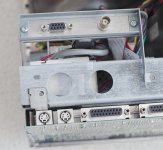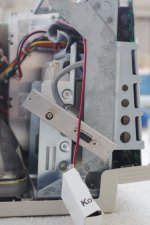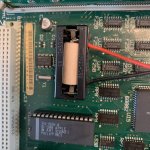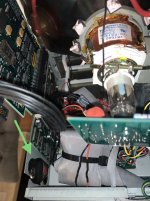quorten
Well-known member
Recently, I've made a modification to my Macintosh SE to clip out the soldered-on 1/2 AA battery that was near the end of its life and soldered a pin header in its place. From there, I attached a cable and routed the other end to an easy to reach place in the back right side of the Macintosh SE. The clock battery is attached via another pin header to the battery holder, and also stored inside a small cardboard box. Figuring out how to mount the box was a bit of a challenge, but pretty soon I settled on using some tape to secure it to the back of the chassis, and the cables to the external PDS expansion connectors also seem to help hold it in place.
Pretty cool, I made it modular with pin headers so that I can have my choice of what kind of battery to plug in, which is right now a CR2032 battery. Works like a charm. No need to go hunting around for a 1/2 AA battery and worrying about the caustic chemicals that might leak out of it when it expires. I also have enough length to route the cable outside the Macintosh through the security cable connector cutouts if I so wish.



Pretty cool, I made it modular with pin headers so that I can have my choice of what kind of battery to plug in, which is right now a CR2032 battery. Works like a charm. No need to go hunting around for a 1/2 AA battery and worrying about the caustic chemicals that might leak out of it when it expires. I also have enough length to route the cable outside the Macintosh through the security cable connector cutouts if I so wish.








